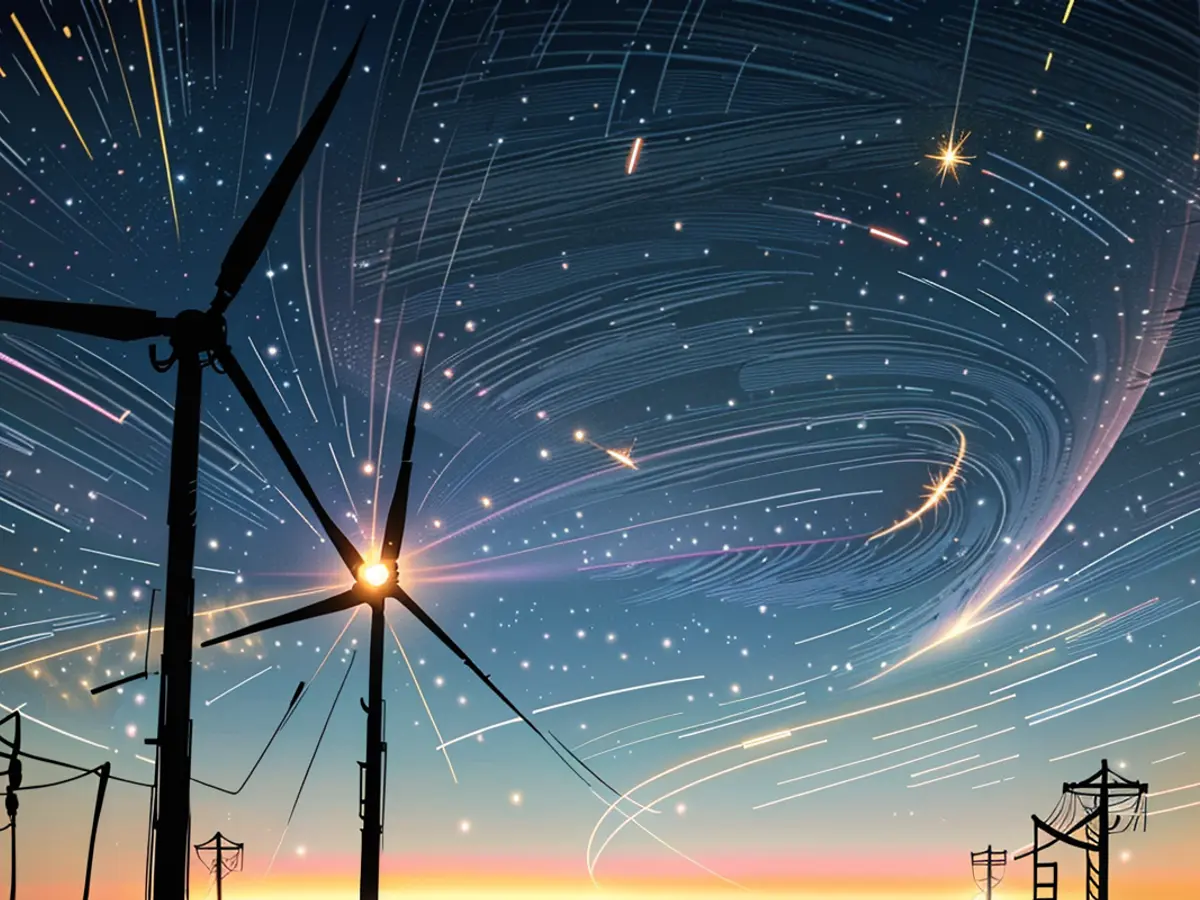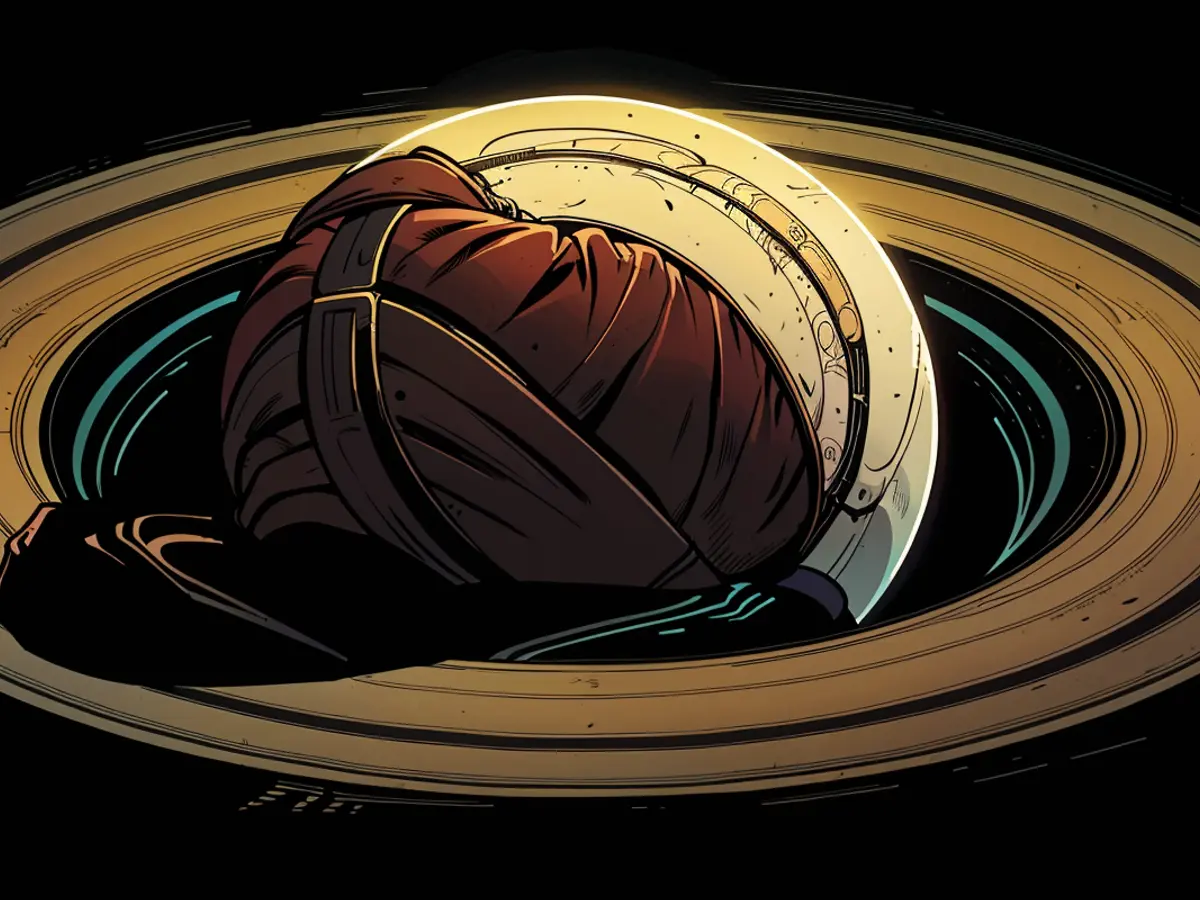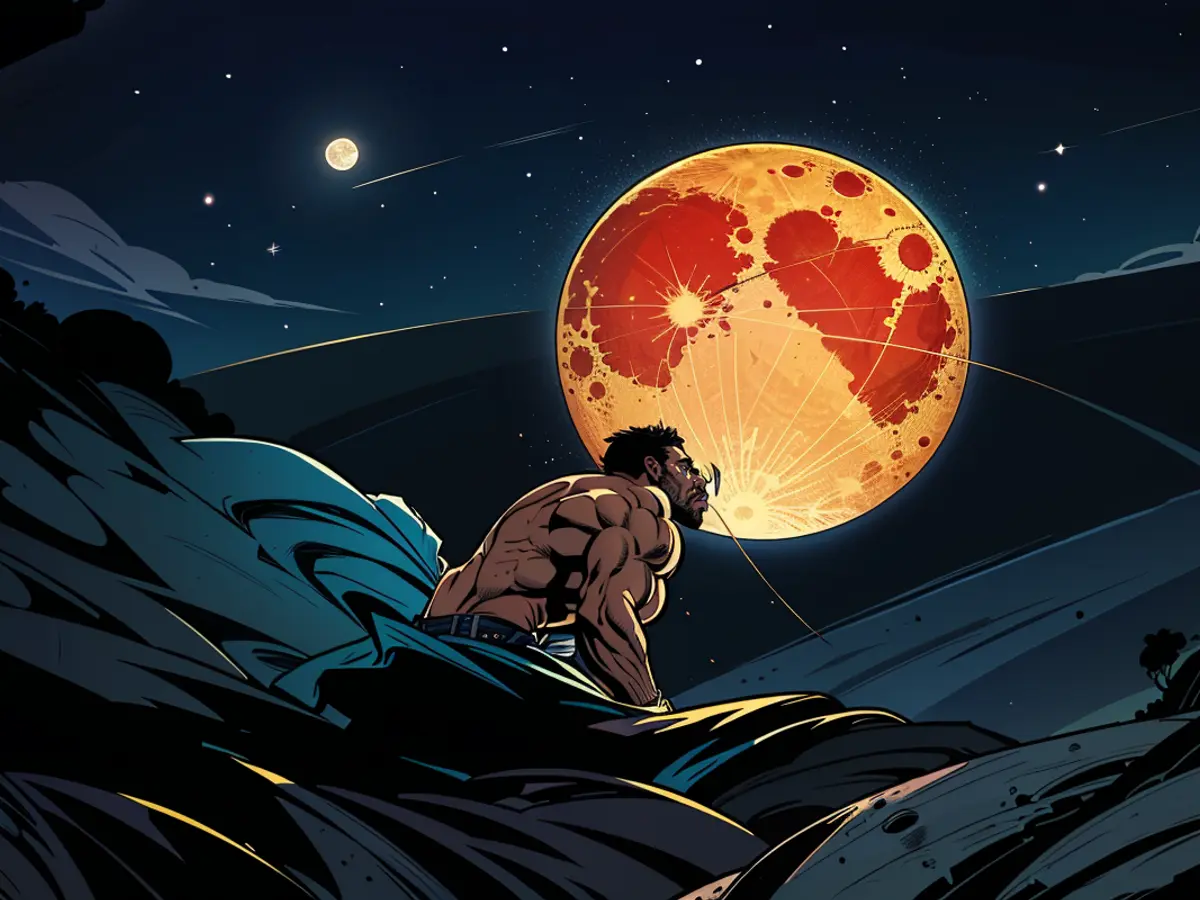The Year's Largest Full Moon and Rapid Orionid Meteor Shower
This coming October holds some exciting astronomical events. The full moon, known as the Hunter's Moon, will reach its peak on the 17th at 13:26, marking the largest full moon of the year. This celestial occurrence will also result in extreme tides and storm surges along the coast.
The moon's close proximity to Earth will also intensify the gravitational pull, causing extreme tides. Storm surges are expected at the coasts, with any autumn storms potentially amplifying this effect.
Planetary Alignment in Autumn
In the evening sky, Saturn, the ringed planet, can be seen high in the east in the constellation Aquarius. It's visible throughout the night and gradually moves away from the morning sky. On the night of the 14th to 15th, the almost full moon will pass near Saturn.
Venus also appears in the evening sky but is not yet very prominent. After sunset, it can be spotted in the deep southwest. On the 26th, it will pass close to the red giant star Antares in Scorpius. During the beginning of October, Venus sets shortly before 8 pm, while by the end of the month, it sets half an hour earlier.
Jupiter becomes the evening's dominant planet. Its rise occurs on the 1st at around 10 pm, but by the end of the month, it rises two hours earlier. Jupiter's brightness lights up the night sky, outshining Venus which sets before Jupiter's rise.
In the northeast sky, Mars appears earlier and earlier. If it rises on the 1st at half past midnight, it crosses the eastern horizon on the 31st already a quarter of an hour before 11 pm. The brightness of Mars significantly increases throughout the month. By October's end, Mars moves out of the Twin constellation and into the constellation Cancer.
Unfortunately, Mercury will not be visible this October. The swift planet does not make an appearance.
Orionids Meteor Shower
Besides the Draconids, the Orionids meteor shower is active from October's beginning to the first week of November. Their origin traces back to Halley's Comet. The shower's maximum is expected on October 22nd, with approximately 25 to 30 meteors per hour expected during observation. The best time for observing is from midnight to 5 am. The Orionids are known for their extreme speeds, approaching the Earth at around 65 kilometers per second.
During the evening, the autumn constellations take their positions. Cassiopeia, the well-known celestial W, shines in the zenith. Pegasus's star square, known as the autumn rectangle, has reached the meridian. The Summer Triangle, consisting of Vega, Deneb, and Altair, has moved westward.
Among the autumn constellations is Andromeda, which connects to Pegasus. Its savior, Perseus, is also depicted as a constellation, along with the sea monster Cetus, known as the whale in German. Cetus takes its place in the southeast. Due to its faint stars, it can be challenging to identify.
Deep in the south, Fomalhaut, the main star of the constellation Southern Fish, sparkles. Fomalhaut is the Arabic name for fish mouth. South of Andromeda, the constellations of the Fishes and the Ram can be seen. The Ram is a small but distinctive constellation, primarily consisting of three stars that form an obtuse triangle.
In the east, two bright stars can be spotted. In the northeast, the yellowish Capella gleams in the Charioteer, and deeply in the east, the reddish Aldebaran shines in the constellation Taurus, signaling the approaching winter.
Solar Eclipse - Unseen in Europe
October begins with a solar eclipse, unfortunately, inconveniently not visible from Europe. On October 2nd at 8:49 PM, the dark new moon passes in front of the sun, covering it. However, on the same day, the moon is at a distance of 406,516 kilometers from Earth, making the dark new moon's disc slightly smaller than the sun's.
As a result, the moon cannot fully cover the sun. A bright ring of the sun remains around the new moon. The zone of the ring-shaped phase mainly stretches over the Pacific. It begins south of Hawaii, crosses the Pacific Ocean, brushes the southern tip of South America, and ends in the South Atlantic.
As October progresses, the sun assumes increasingly southern positions. It travels through the constellation Virgo and switches to the constellation Libra on October 31st in the early morning. On the night of October 22nd to 23rd, it enters the zodiac sign of Scorpio at midnight. The sun's noon height decreases by eleven degrees, and the length of the day shortens by almost two hours.
On October 27th, Central European Summer Time ends. Clocks will be set back one hour at 3 AM CEST.
The Orionids meteor shower, originating from Halley's Comet, is an exciting addition to The Astrology events in October, with a peak expected on the 22nd. The almost full moon on the 14th and 15th will also have a close encounter with Saturn, offering a celestial sight in the evening sky.









